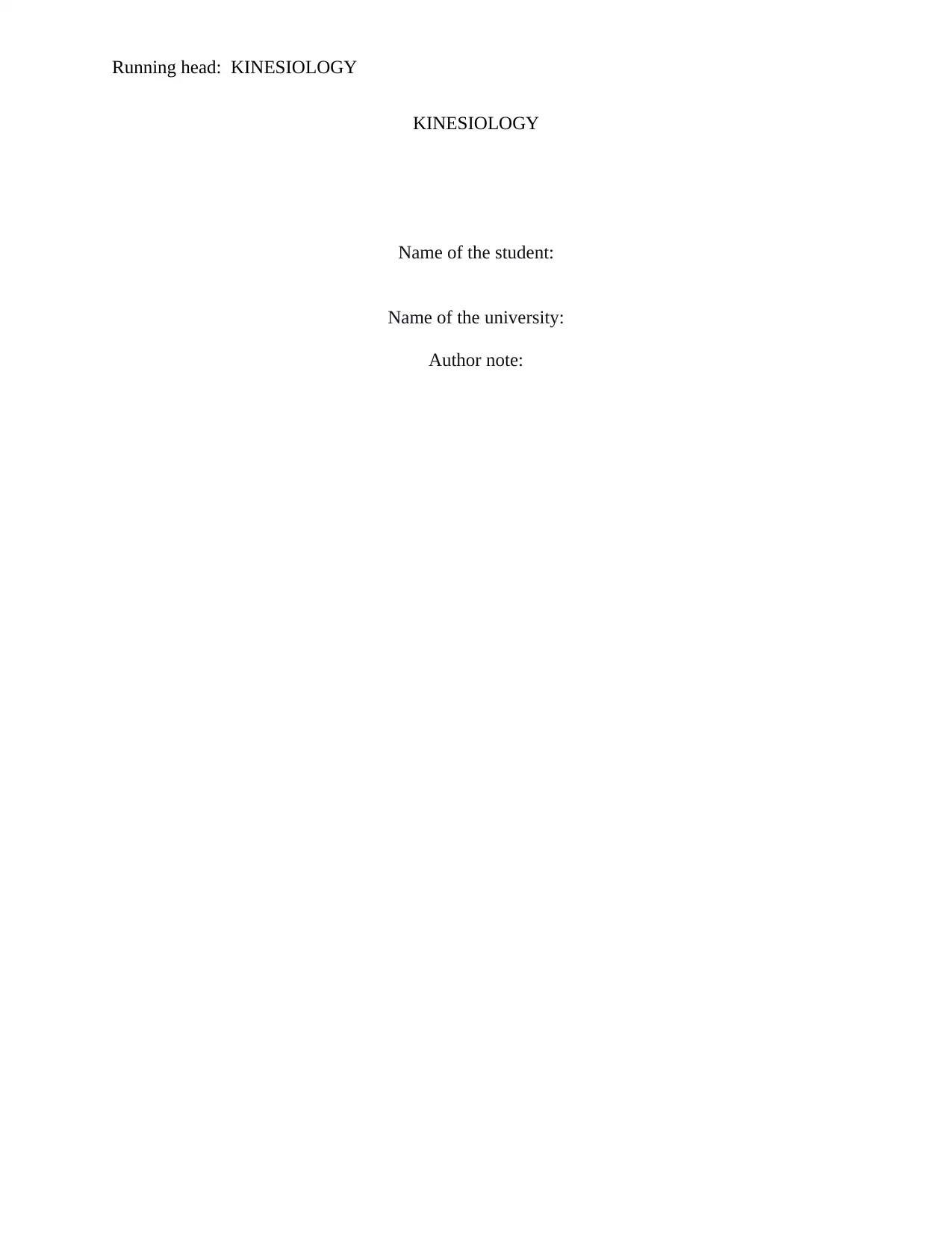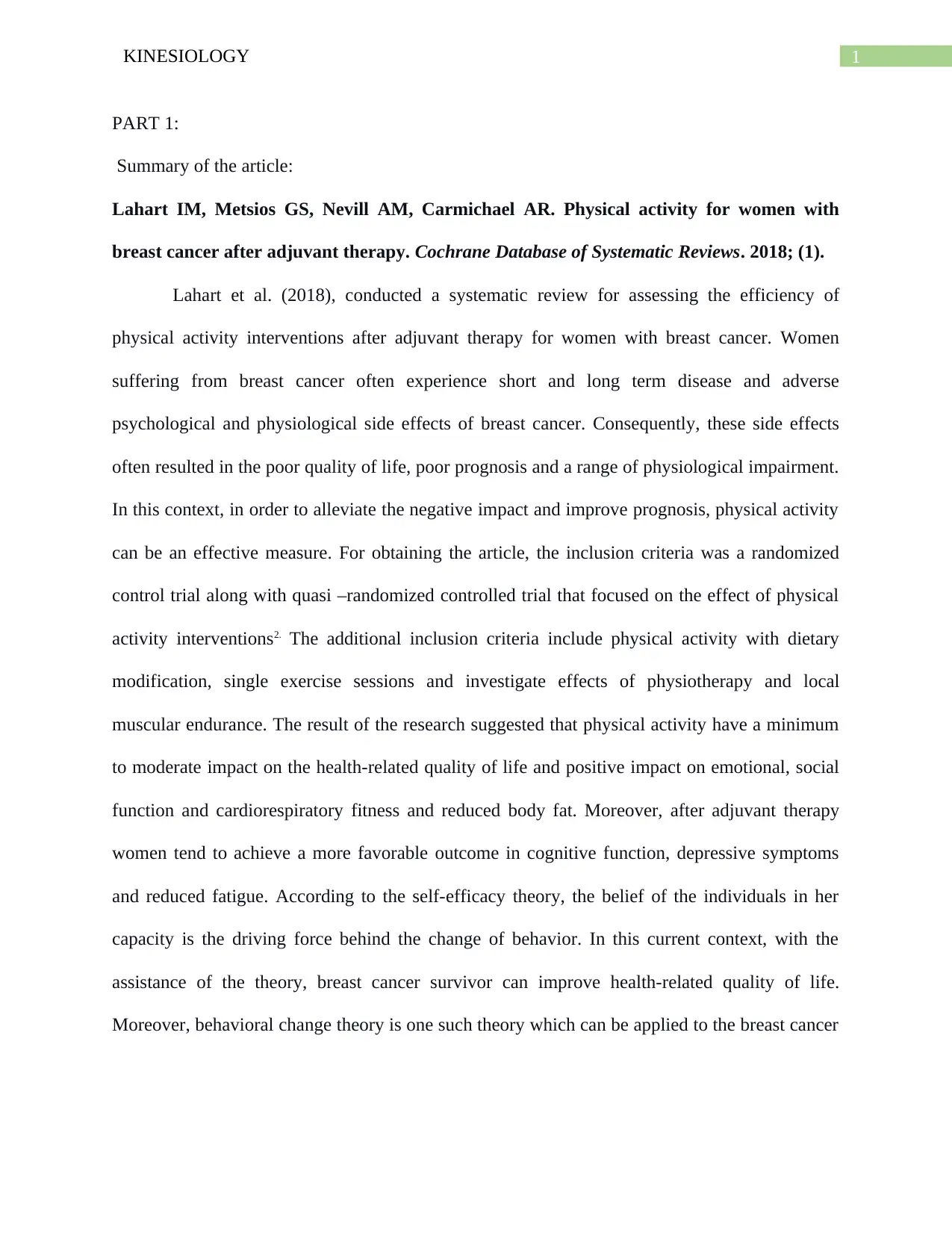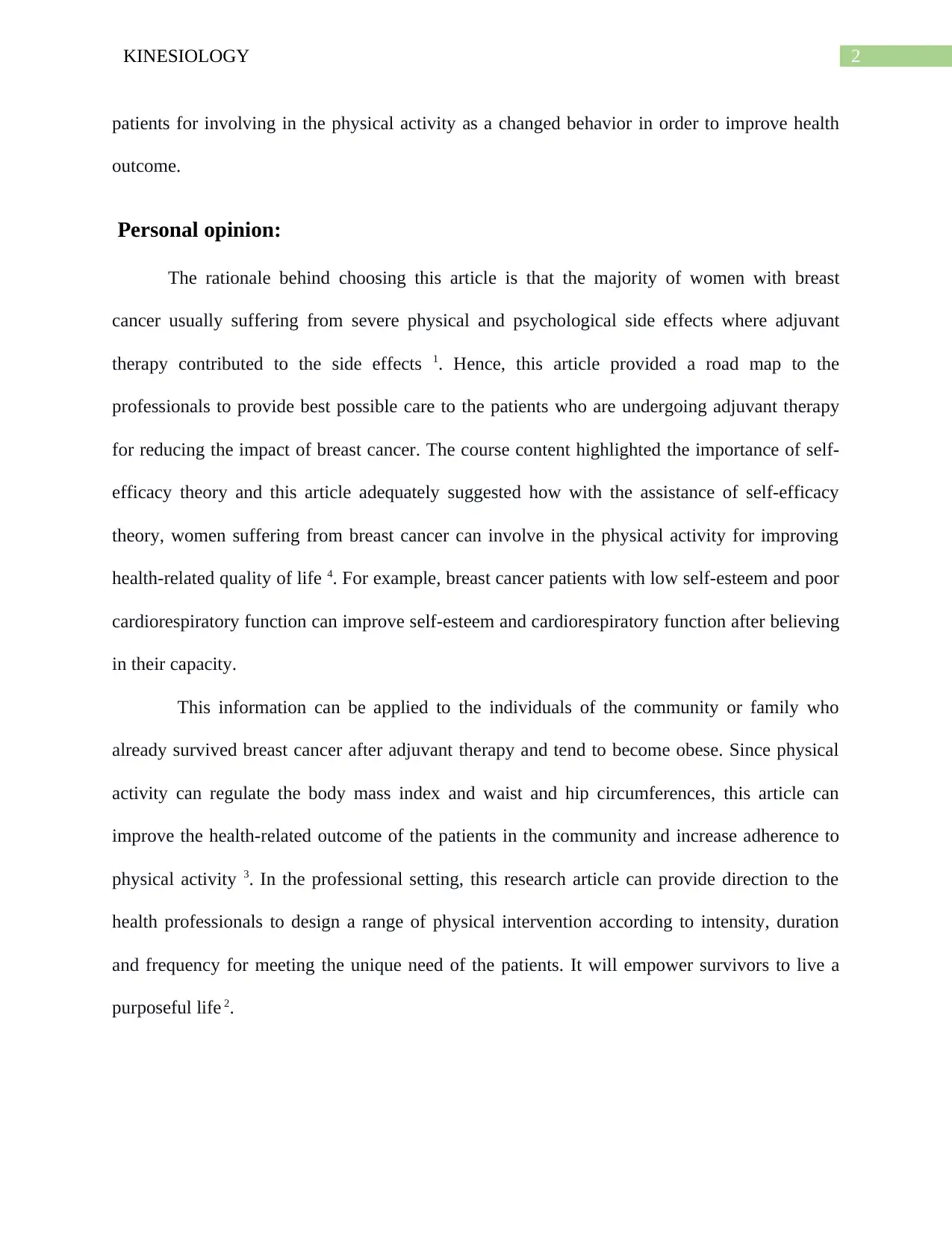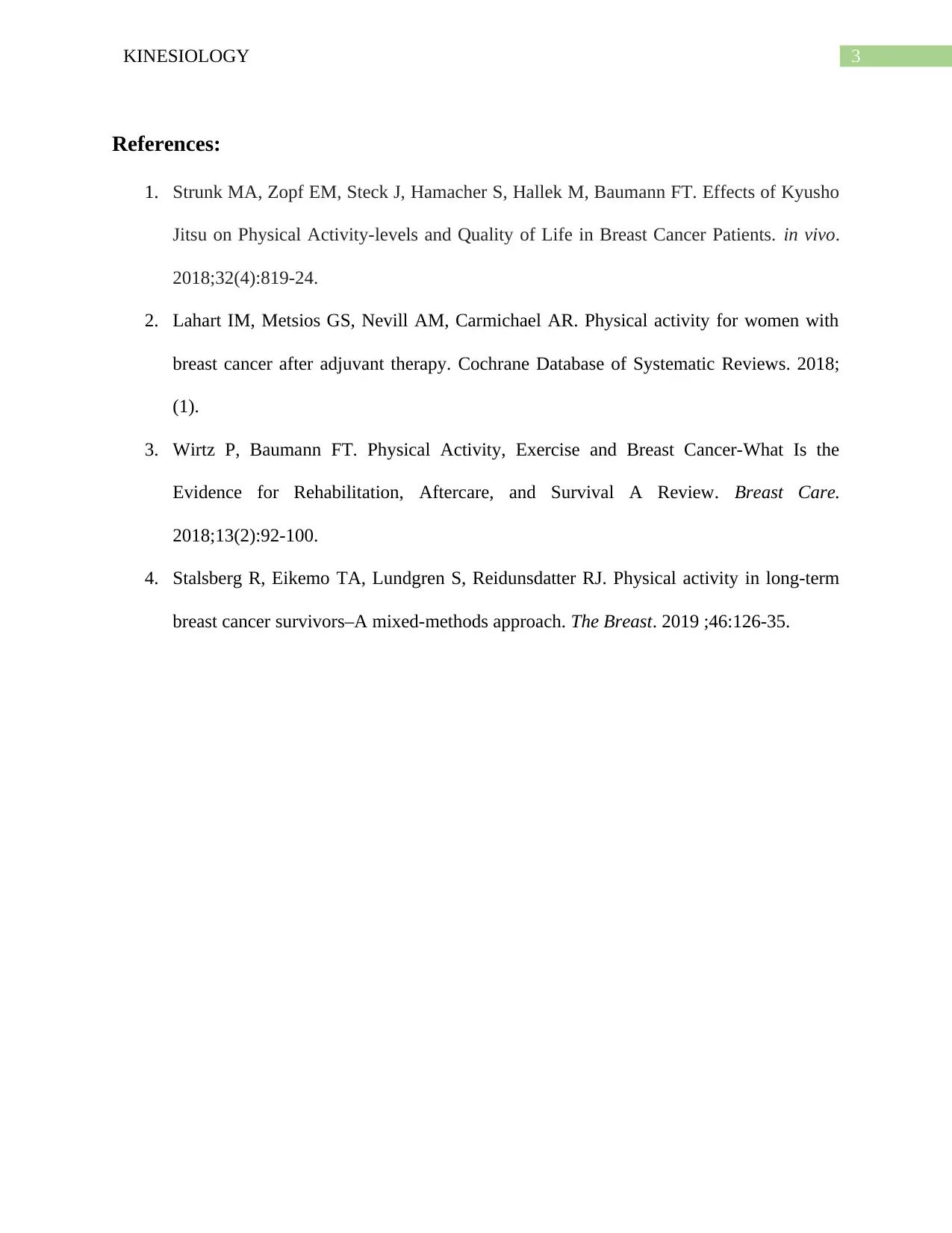Kinesiology 3301: Article Read and Reaction Paper on PA Programs
VerifiedAdded on 2022/08/16
|4
|752
|19
Homework Assignment
AI Summary
This assignment is a reaction paper to the article by Lahart et al. (2018), which reviews the effectiveness of physical activity interventions for women with breast cancer after adjuvant therapy. The student summarizes the article's findings, highlighting the positive impact of physical activity on health-related quality of life, emotional and social function, cardiorespiratory fitness, and body fat reduction. The paper also discusses the role of self-efficacy theory in promoting behavioral change. The student explains their choice of the article, linking it to the course content on self-efficacy and the challenges faced by breast cancer survivors. The assignment includes personal and professional reactions, detailing how the information can be applied to improve the health of individuals in the community and design effective physical activity interventions in a professional setting. The student emphasizes how health professionals can use the article to design physical interventions to meet the unique needs of patients.
1 out of 4











![[object Object]](/_next/static/media/star-bottom.7253800d.svg)